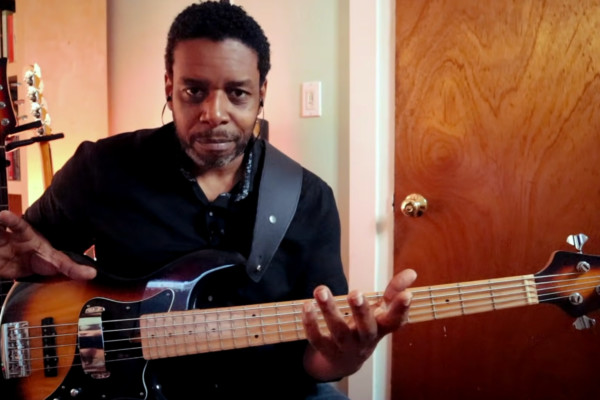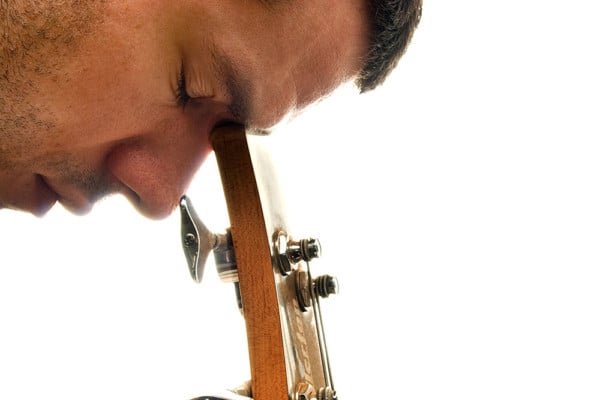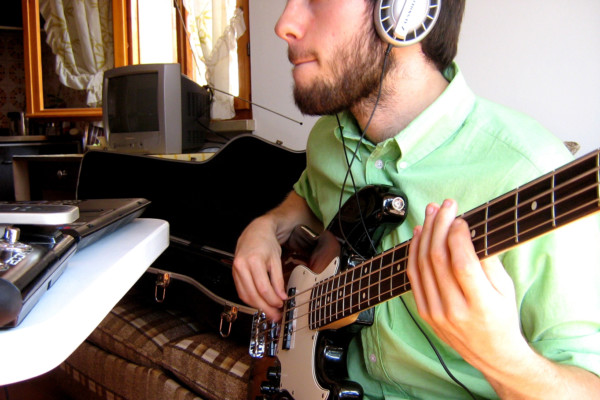Playing Pain Free
Q: As someone who wants to practice for hours each day, what advice would you give to prevent injury? Do you have any warm up routines or other advice?
A: You know, I’ve been lucky. I’ve never consciously warmed up when practicing, and I’ve never had any pain issues. However, I’ve noticed more recently that it takes my hands and fingers a while to limber up. I do stress to my students that it’s important not to “play through the pain”. It’s one thing to push your hands and get a little cramped, but it’s important not to damage or push yourself too hard.
In order to increase my stretching or reaching ability with my left hand, I’ve started practicing all of my scales and arpeggios lengthwise up the neck instead of all in one position. Not only is this a great exercise, it is also a great way to reinforce your fretboard knowledge, all over the neck.
In order to increase facility in both hands, I am always seeking out difficult material to learn (Chick Corea melodies, classical pieces, and so on) and learning them slowly. Starting slow, the goal is to build up speed gradually, until you reach the tempo you want. It is very important to practice difficult passages slowly and play them properly, otherwise you’ll be practicing a sloppy approach.
My warm ups pretty much just consist of:
- Wearing gloves before the gig if my hands are cold
- Running some scales and arpeggios (sometimes playing each note 2 or 3 times to help warm up my right hand, which seems to limber up slower than my left)
- Interlock my fingers (like you’re going to pray) but keep them loose. Then pull one hand toward yourself, while pushing the other away. Do this back and forth, and it should help to limber up the fingers and encourages a sidewards stretch.
While I do think that everyone’s physiology is different, and some people may be more prone to injury than others, one can avoid a lot of problems by:
- Practicing with intentionality and efficiently.
- Staying relaxed is probably the most important thing.
- Remember to breathe and do not tense up when you play.
- Adjust your strap so that your bass is in the same position standing as when you’re sitting. If you ride it too low or high, you’re probably cranking on your wrists too much.
- If it hurts, stop and take a break!
- Take care of your hands when you’re not playing as well. I had to quit working construction years ago because it was too hard on my hands. I took a coffee shop job instead (and proceeded to break a coffee cup and slice my finger open down to the tendon, but that was a freak accident.) Wear gloves when doing any yard work. Wear gloves when loading gear! There are a lot of fine muscles in the hand that are easily damaged. If you want to play fluidly, you need to protect those muscles and nurture your tools (hands).
As I’ve never really dealt with any pain issues, I don’t have that much experience with regard to to how to deal with it, and I am not a doctor. I’m sure some folks out there have some tips and experiences they can share in the comment thread below.
Have a question for Damian Erskine? Send it to [email protected]. Check out Damian’s instructional books, Right Hand Drive and The Improviser’s Path.



